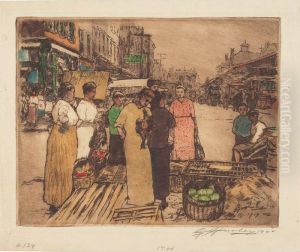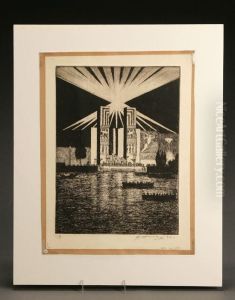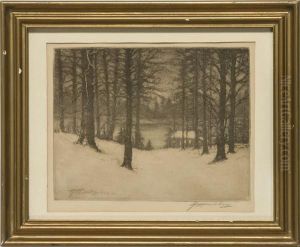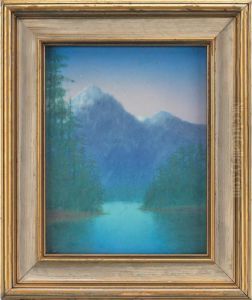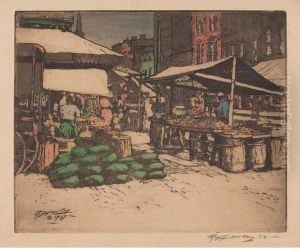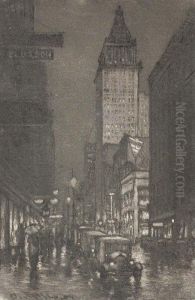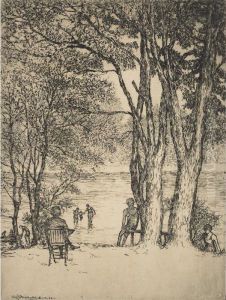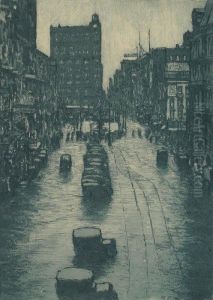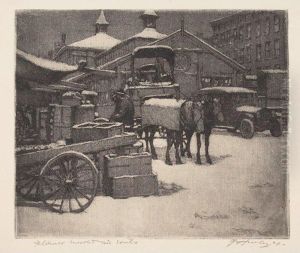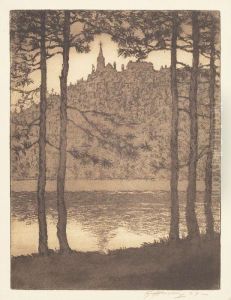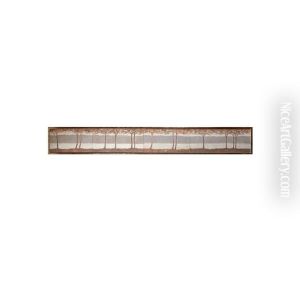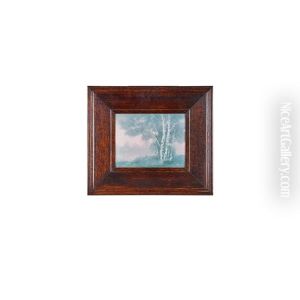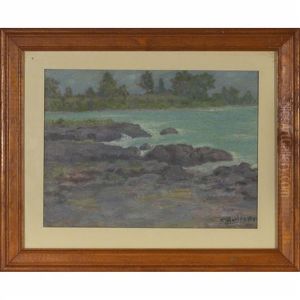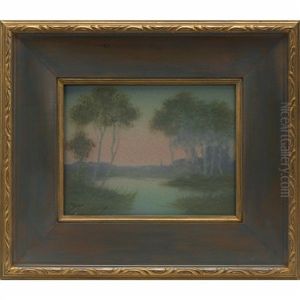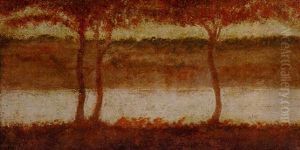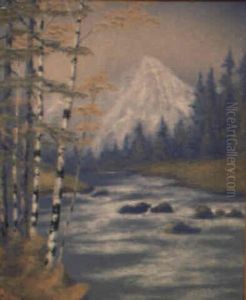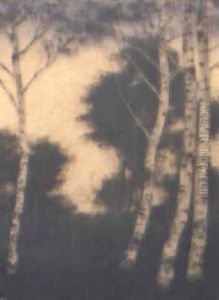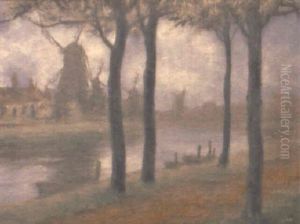Edward Timothy Hurley Paintings
Edward Timothy Hurley was an American artist born on December 25, 1869, in Cincinnati, Ohio. He grew up in a working-class neighborhood and demonstrated an early interest and talent in art. Despite the financial constraints of his family, Hurley was able to pursue his passion for art and became a significant figure in the Cincinnati art scene.
Hurley's early career was marked by a variety of jobs that allowed him to develop his skills as an artist. He worked as an illustrator for a number of local commercial firms, and this practical experience honed his attention to detail and composition. His work during this period was characterized by a strong naturalistic style, and he was particularly drawn to the medium of etching, which would become a hallmark of his artistic output.
As Hurley matured as an artist, he became associated with the Rookwood Pottery company, where he worked from 1896 until the late 1940s. Rookwood Pottery was renowned for its high-quality ceramics, and Hurley contributed to its reputation with his designs and decorations. His work at Rookwood included scenic vellum plaques and glazed pieces, which often featured landscapes, architectural subjects, and natural motifs. Hurley's ceramics are highly collectible and are considered an important part of American art pottery history.
In addition to his work at Rookwood, Hurley continued to produce etchings and became a central figure in the local art community. He was a member of the Cincinnati Art Club and participated in various exhibitions, including those at the Cincinnati Museum. His etchings display a mastery of the medium, capturing the essence of his subjects with fine lines and a keen sense of atmosphere. Hurley's etchings often depict scenes of Cincinnati and the Ohio River Valley, as well as other rural landscapes and urban environments.
Hurley's work reflects the influence of the Arts and Crafts movement, which emphasized the importance of craftsmanship and the beauty of handmade objects. His artistic style also shows elements of Impressionism, particularly in his use of light and color in his etchings and paintings.
Edward Timothy Hurley's legacy is that of a dedicated artist who captured the spirit of his hometown and its surroundings. His works are held in various collections and continue to be appreciated for their technical skill and artistic beauty. Hurley passed away on July 6, 1950, in Cincinnati, leaving behind a body of work that remains an important part of American art history.
